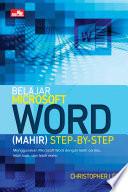Web 2.0 technology has drawn much attention recently as a fascinating tool for Information Literacy Instruction (ILI), especially in academic libraries. This research was aimed to investigate the implementation of Web 2.0 technology for ILI in Thai university libraries, in terms of information literacy skills being taught, types of Web 2.0 technology that were implemented, ways of implementing Web 2.0 technology, and problems in implementing Web 2.0 technology. Additionally, in case of the university libraries which did not apply Web 2.0 technology to their ILI, the research also explored their reasons, implementation plan, and factors important to their decisions on the implementation of Web 2.0 technology. Despite the research limitation in the context of Thai higher education, the research should be helpful to fulfill the research gap, and, particularly, to provide other university libraries with interesting suggestions on the implementation of Web 2.0 technology for ILI, including the reinforcement of the implementation. [The researcher gratefully acknowledges the supporting fund from the Research Section, Faculty of Arts, Chulalongkorn University and from Suthilak Ambhanwong Memorial Fund. For full proceedings, see ED557189.].
Web 2.0 technology has drawn much attention recently as a fascinating tool for Information Literacy Instruction (ILI), especially in academic libraries.










